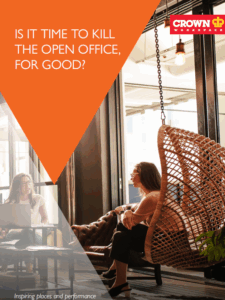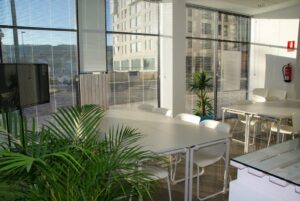Are remote setups beating the office in terms of tech and comfort?
In our recent article, “Is it time for offices to get personal again?” we discussed the importance of personal workspace environments for productivity and morale. There’s another aspect office designers and facilities managers need to address urgently: technology.
Modern workplaces face a particularly post-COVID conundrum: Employees finding their home setup better equipped, and more comfortable, than their office. This mismatch has become clear in our recent report, “Is it time to kill the open office, for good?” where we surveyed over 1,000 office workers and 200 facilities managers about workplace conditions, technology, and productivity post COVID.
Nearly half (48 percent) of respondents said improved technology is their main reason for spending more time in the office. 36 percent mentioned that a second monitor significantly boosts their productivity (among other equipment). Yet we all know from experience many employees often find these tools easier to access at home than at work, after all you don’t need to fill out paperwork to simply buy a second monitor or wireless keyboard for yourself.
If employees regularly find better tools and connectivity at home, it seems natural they’d question why they should commute in the first place. Luis Contreras, Managing Director at Crown Workspace Singapore, pointed out that even traditional office cultures like Singapore’s are adopting flexible hours and technology to match home-office setups.
Why do home offices feel superior anyway?
As we mentioned in our initial article, when at home, people often have quieter surroundings, personalized setups, and technology they themselves have purchased. This is a long-running trend outside of hardware: enterprise software often lags behind consumer software in terms of functionality and intuitive UXs. Consider how long it took after WhatsApp was released for enterprise instant messaging systems to penetrate office ecosystems.
Our survey also found that 45 percent of office workers feel more productive at the office, but, and this is the important part: this productivity only happens under certain conditions. What do we mean by that? Good equipment, quiet areas, and comfortable furniture were key reasons mentioned by employees in our report.
Harvard Business Review’s 2019 “The Truth About Open Offices” (one of the most magisterial treatments of the history of the open office concept) also mentions this. Offices falling behind technologically risks pushing employees toward digital-only
interactions with their colleagues because the physical office environment can’t adequately serve their needs.
Technology gaps impact office attendance
There’s a clear figure in our survey that really stands out in all of this. Ninety-one percent of respondents said they’d spend more time at the office “if technology and workspace improvements were made”. In other words, a lack of investment means employees are simply not as motivated to come in.
In really practical terms, this means investing in better connectivity, additional monitors, video conferencing areas, noise-canceling headsets, and smart meeting tools. These things aren’t luxuries anymore in the eyes of someone who comfortably works from home.
How can this gap be closed?
Two words: targeted investment. This includes ensuring reliable, high-speed internet connectivity, easy device integration, and ergonomic setups for tasks where this is needed.
Gensler’s Workplace Surveys, the largest survey of office workers out there, state quite explicitly that companies which prioritize technology, comfort and privacy regularly report consistently higher employee satisfaction.
The four areas you need to pay attention to:
- Upgrade connectivity: High-speed connectivity and network reliability. What’s the point of being in an office where the internet regularly goes down?
- Ergonomic setups: Second monitors, adjustable desks, as well as low-cost accessories like wrist rests for keyboards.
- Meeting solutions for a new era: Well-equipped video conferencing rooms that allow for quick, easy meetings, combined with quiet areas for when your staff need to “lock in”.
- Continuous employee feedback: Regularly ask staff about their evolving technology needs and respond accordingly. This is the most important step, so don’t treat it as a piece of admin.

Download our full report, “Is it time to kill the open office, for good?” to learn more and get practical strategies for making your workplace a place where people actually want to come to every week.
Related stories
사무실 폐기물을 줄이는 실행 가능한 전략을 살펴보세요. 재활용 팁, 전자 폐기물 처리, 종이 사용 감소, 지속 가능한 조달을 다루며, 여러분의 직장이 더 친환경적이고 스마트해지도록 돕습니다.
Crown Workspace의 최신 백서에서 진정한 친환경 사무실의 기준을 확인하세요. 1,000명의 직원과 200명의 시설 관리자 조사 결과를 바탕으로, 지속가능성, 그린워싱, 순환경제 실천, 그리고 실질적인 환경 효과를 창출하는 사무실 설계 전략을 소개합니다.
Around half of all Facilities Managers plan to downsize their office space in the next three years. How, and why?




























